Kia EV3 vs Nissan Leaf – Differences & prices compared
Everyday use, family trips or long-distance drives – here’s where the differences show.
Discover whether Kia EV3 or Nissan Leaf fits your lifestyle better.
Costs and Efficiency:
Looking at overall running costs, both models reveal some interesting differences in everyday economy.
Nissan Leaf has a barely noticeable advantage in terms of price – it starts at 30800 £, while the Kia EV3 costs 30800 £. That’s a price difference of around 77 £.
In terms of energy consumption, the advantage goes to the Kia EV3: with 14.90 kWh per 100 km, it’s to a small extent more efficient than the Nissan Leaf with 16.70 kWh. That’s a difference of about 1.80 kWh.
As for range, the Kia EV3 performs clearly perceptible better – achieving up to 605 km, about 220 km more than the Nissan Leaf.
Engine and Performance:
Under the bonnet, it becomes clear which model is tuned for sportiness and which one takes the lead when you hit the accelerator.
When it comes to engine power, the Nissan Leaf has a barely noticeable edge – offering 217 HP compared to 204 HP. That’s roughly 13 HP more horsepower.
In acceleration from 0 to 100 km/h, the Nissan Leaf is barely noticeable quicker – completing the sprint in 6.90 s, while the Kia EV3 takes 7.50 s. That’s about 0.60 s faster.
In terms of top speed, the Kia EV3 performs hardly perceptible better – reaching 170 km/h, while the Nissan Leaf tops out at 157 km/h. The difference is around 13 km/h.
There’s also a difference in torque: Nissan Leaf pulls to a small extent stronger with 340 Nm compared to 283 Nm. That’s about 57 Nm difference.
Space and Everyday Use:
Beyond pure performance, interior space and usability matter most in daily life. This is where you see which car is more practical and versatile.
Both vehicles offer seating for 5 people.
In curb weight, Nissan Leaf is slightly lighter – 1580 kg compared to 1800 kg. The difference is around 220 kg.
In terms of boot space, the Kia EV3 offers somewhat more room – 460 L compared to 394 L. That’s a difference of about 66 L.
In maximum load capacity, the Kia EV3 performs noticeable better – up to 1251 L, which is about 461 L more than the Nissan Leaf.
When it comes to payload, Kia EV3 to a small extent takes the win – 470 kg compared to 415 kg. That’s a difference of about 55 kg.
Who wins the race?
The Kia EV3 proves to be outperforms in nearly all aspects and therefore becomes our DriveDuel Champion!
Kia EV3 is the better all-rounder in this comparison.
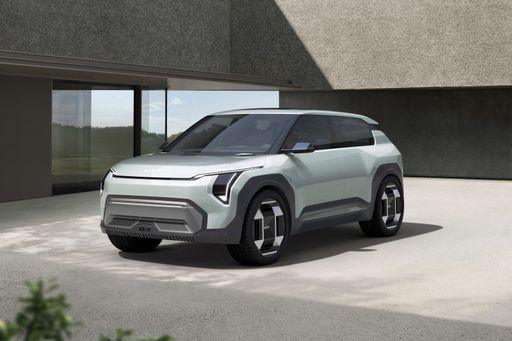
Kia EV3
Kia EV3
The Kia EV3 is a testament to innovative design and sustainable driving, featuring a sleek exterior that melds form with function. Inside, the cabin offers a harmonious blend of modern technology and comfort, making every journey enjoyable for both driver and passengers. With its impressive range and eco-friendly credentials, the EV3 positions itself as a competitive player in the evolving landscape of electric vehicles.
details @ kiamedia.com
@ kiamedia.com
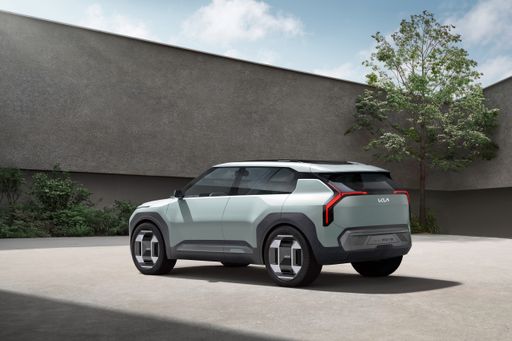 @ kiamedia.com
@ kiamedia.com
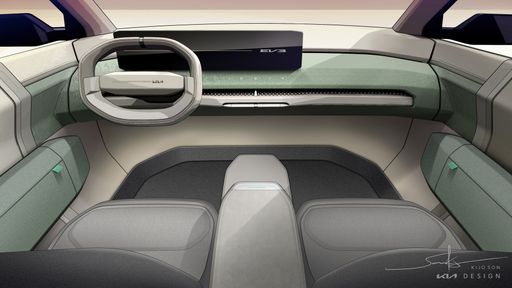 @ kiamedia.com
@ kiamedia.com
Nissan Leaf
The Nissan Leaf stands out as a pioneering model in the realm of electric vehicles, known for its impressive blend of practicality and eco-friendliness. It offers a smooth and quiet driving experience, making it an ideal choice for city commuting and longer journeys alike. The interior design is both comfortable and intuitive, providing drivers with a sense of modernity and ease of use.
details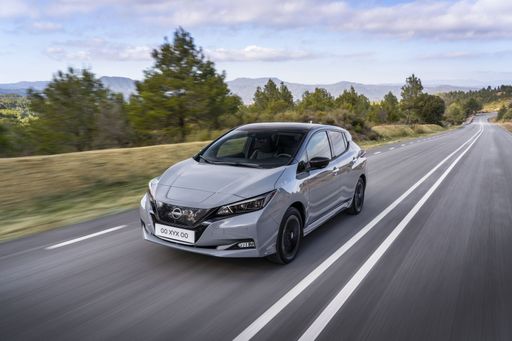 @ germany.nissannews.com
@ germany.nissannews.com
 @ germany.nissannews.com
@ germany.nissannews.com
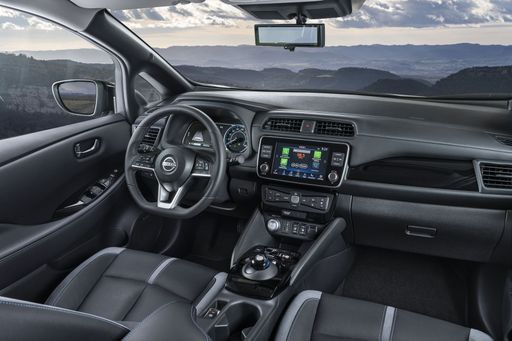 @ germany.nissannews.com
@ germany.nissannews.com
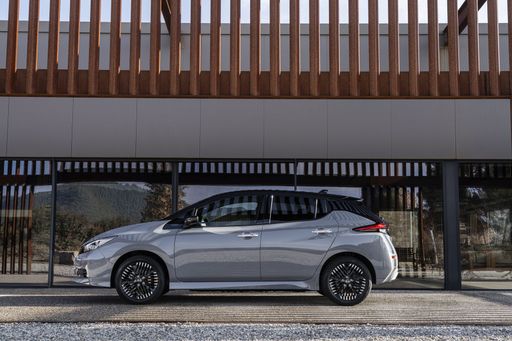 @ germany.nissannews.com
@ germany.nissannews.com

|

|
|
|
|
Costs and Consumption |
|
|---|---|
|
Price
30800 - 41700 £
|
Price
30800 - 37200 £
|
|
Consumption L/100km
-
|
Consumption L/100km
-
|
|
Consumption kWh/100km
14.9 - 16.2 kWh
|
Consumption kWh/100km
16.7 - 17.8 kWh
|
|
Electric Range
436 - 605 km
|
Electric Range
270 - 385 km
|
|
Battery Capacity
58.3 - 81.4 kWh
|
Battery Capacity
39 - 59 kWh
|
|
co2
0 g/km
|
co2
0 g/km
|
|
Fuel tank capacity
-
|
Fuel tank capacity
-
|
Dimensions and Body |
|
|---|---|
|
Body Type
SUV
|
Body Type
Hatchback
|
|
Seats
5
|
Seats
5
|
|
Doors
5
|
Doors
5
|
|
Curb weight
1800 - 1885 kg
|
Curb weight
1580 - 1756 kg
|
|
Trunk capacity
460 L
|
Trunk capacity
385 - 394 L
|
|
Length
4300 - 4310 mm
|
Length
4490 mm
|
|
Width
1850 mm
|
Width
1788 mm
|
|
Height
1560 - 1570 mm
|
Height
1540 - 1545 mm
|
|
Max trunk capacity
1251 L
|
Max trunk capacity
790 L
|
|
Payload
470 kg
|
Payload
384 - 415 kg
|
Engine and Performance |
|
|---|---|
|
Engine Type
Electric
|
Engine Type
Electric
|
|
Transmission
Automatic
|
Transmission
Automatic
|
|
Transmission Detail
Reduction Gearbox
|
Transmission Detail
Reduction Gearbox
|
|
Drive Type
Front-Wheel Drive
|
Drive Type
Front-Wheel Drive
|
|
Power HP
204 HP
|
Power HP
150 - 217 HP
|
|
Acceleration 0-100km/h
7.5 - 7.9 s
|
Acceleration 0-100km/h
6.9 - 7.9 s
|
|
Max Speed
170 km/h
|
Max Speed
144 - 157 km/h
|
|
Torque
283 Nm
|
Torque
320 - 340 Nm
|
|
Number of Cylinders
-
|
Number of Cylinders
-
|
|
Power kW
150 kW
|
Power kW
110 - 160 kW
|
|
Engine capacity
-
|
Engine capacity
-
|
General |
|
|---|---|
|
Model Year
2024
|
Model Year
2019
|
|
CO2 Efficiency Class
A
|
CO2 Efficiency Class
A
|
|
Brand
Kia
|
Brand
Nissan
|
What drive types are available for the Kia EV3?
The Kia EV3 is offered with Front-Wheel Drive.
The prices and data displayed are estimates based on German list prices and may vary by country. This information is not legally binding.
